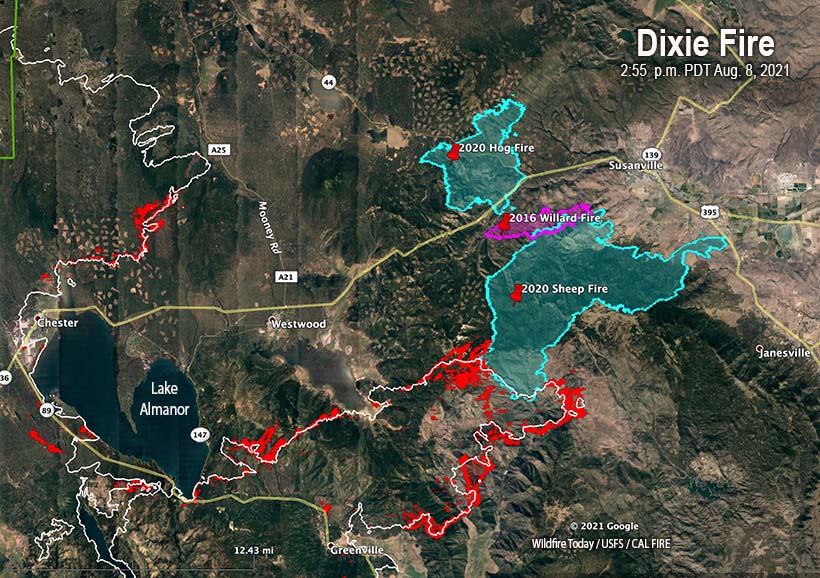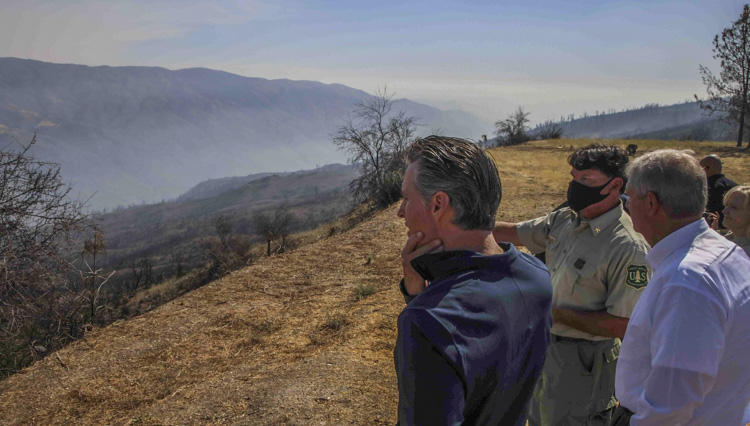7:49 a.m. PDT August 10, 2021

The Dixie Fire was burning so vigorously at 9:45 Monday night that the smoke plume which had risen to 22,000 feet made it impossible for the small fixed wing mapping plane to obtain good imagery on the northern section of the fire.
North of Highway 36, firefighters are attempting to prevent the north end of the fire from moving east across the A21/A25 Mooney Road. Dozer lines have been constructed to reinforce the road but spot fires have still occurred east of the lines. That is the section of the fire that could not be mapped Monday night.
To see all articles on Wildfire Today about the Dixie Fire, including the most recent, click HERE.
CAL FIRE reported at 7 p.m. Monday that it had burned at least 482,000 acres. However, later fixed wing and satellite imagery indicates it was still growing into the night.
For the last two days the Dixie Fire has been working its way around the southwest tip of the 2020 Sheep Fire, 10 miles southwest of Susanville. On the south side of the Sheep Fire is the scar from the 2007 Moonlight Fire, where the diminished fuels have slowed the spread, but the north side has no recent fire history, resulting in greater fire activity on that side. Our map in an article from August 6 shows the footprint of the Moonlight Fire. The map at the top of this article shows a lighter color of vegetation where that fire burned 14 years ago.
The latest data from crews evaluating damage to infrastructure have found 873 destroyed structures. Maps are available showing the status of structures.
Smoke Monday morning was slow to dissipate, hampering the use of aircraft. In the afternoon wind from the southwest gusting to 20 mph thinned it out, and also increased the fire behavior.
The GOES 17 satellite image, below, shows that the fire was very active at 6:46 p.m. Monday. At that time it was just beginning to form pyrocumulus clouds which later grew, forming a line of condensation that reached to Nevada.












